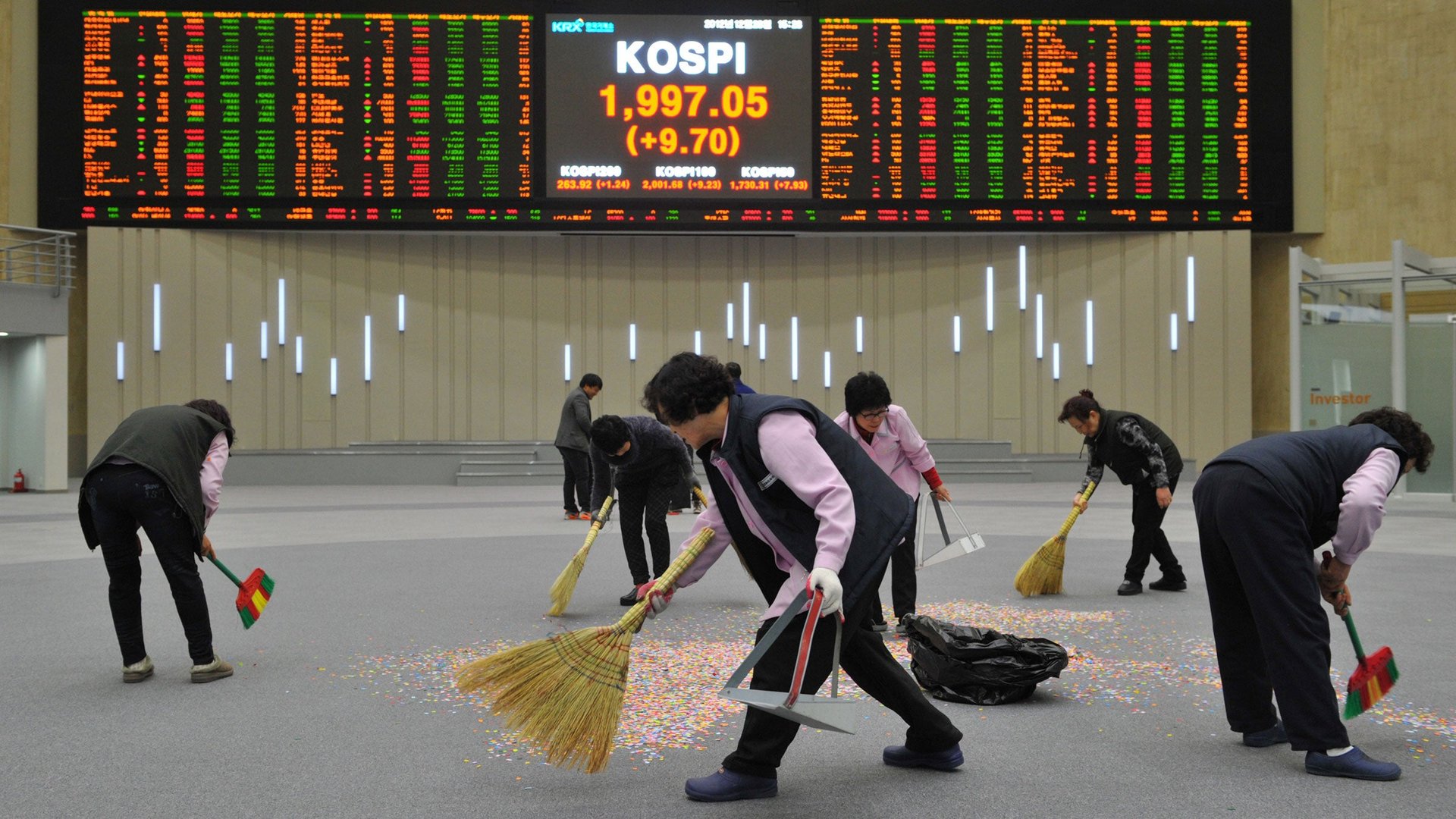As America falls off the fiscal cliff, Asia prepares to climb the fiscal mountain
While the US dithers over just how much to tighten its fiscal belt, Asia’s big economies are loosening theirs. Following their recent elections, Japan and South Korea are joining China in using fiscal stimulus to cope with the sluggish global economy.


While the US dithers over just how much to tighten its fiscal belt, Asia’s big economies are loosening theirs. Following their recent elections, Japan and South Korea are joining China in using fiscal stimulus to cope with the sluggish global economy.
Data published today highlighted just how slack Japan’s economy is. Industrial output fell 1.7% month-on-month in November, more than forecasted by any of the economists Bloomberg had surveyed beforehand, and back to a level last seen after the devastating 2011 earthquake. Consumer prices, excluding those for fresh food, continued to decline too.
The new government, led by the Liberal Democratic Party’s Shinzo Abe, has focused on deflation as a particular evil. Abe is insisting that the Bank of Japan double its target inflation level to 2%. In a sign some took that its independence is disappearing, the central bank this week said it would review the target next month.
But Abe is looking at fiscal as well as monetary policy. His team is working on a ¥10 trillion ($116 billion) supplementary budget of new infrastructure projects, tax breaks and other measures for the last three months of the fiscal year ending March 31. It will also probably shrug off an annual cap on bond issuance set by the previous government.
The markets are showing faith that Abe can deliver: the Nikkei stock average hit a new high for the year and the yen fell to its lowest level against the dollar in more than two years. Signs of concern are so far mild: Japanese government bond yields have risen slightly, but are still lower than a year ago, as are prices for protection against default on the debt.
In South Korea, by contrast, president-elect Park Geun-hye has been more circumspect about her economic strategy. When the finance ministry cut its forecasts for 2012 and 2013 economic growth by at least a percentage point each yesterday, observers took it as a sign that action was on the way. Data out today, however showed industrial output expanding much more quickly than expected in November and a record high monthly current-account surplus despite worries about slowing export markets.
But with the finance ministry still projecting a budget surplus for this year and the next two—in contrast with Japan’s chronic deficits—analysts see plenty of leeway for new spending, in contrast with Japan. Analysts at Nomura think Park could spend up to 20 trillion won ($19 billion) more for the year to support plans to expand social welfare programmes.
In China, meanwhile, the new national leadership selected last month has not spelled out detailed plans for 2013. The official language emerging from the annual Central Economic Work Conference in Beijing two weeks ago was anodyne: “China will continue to implement the pro-active fiscal policy and prudent monetary policy next year.” But Bloomberg, expanding on reports in local media, reported on Dec. 27 that China is planning a 55% expansion of the central government budget deficit next year to 850 billion yuan ($136 billion).
This new Asian penchant for stimulus spending should boost the region’s economies. But even that might not save them from the doldrums if there is a fiscal crunch in the US and further turmoil in Europe. Chinese vice premier Wang Qishan this month nudged his American counterparts in Washington about the risks of the fiscal cliff. He’ll be watching.